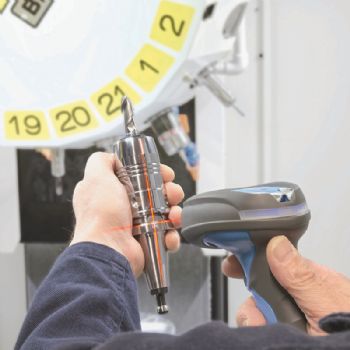
Transparent tool management is a key development in the move towards networked production for Industry 4.0.
With this in mind, Newport Pagnell-based Schunk Intec Ltd (
www.gb.schunk.com) intends to focus on the development of individual tool-holder identification by means of a data matrix code.
Individual laser coding of all Schunk tool-holders is already possible, but as part of the company’s Industry 4.0 initiative, it is offering the data matrix code free of charge with Tribos polygonal clamping components and many Tendo hydraulic expansion tool-holders.
In the future, tool-holders will be identified by a code that allows them to be connected with database systems of different suppliers — allowing users to have precise information on locations, tools used and machining parameters, for example.
At its headquarters in Germany, Schunk demonstrates the system’s capabilities in combination with a readily available tool management system. The data matrix code of the Schunk tool-holder is scanned by the tool pre-setting device, coupling the holder both physically and virtually with a tool.
This generates a digital twin in the database, for storage of all related data during the course of the assembly’s use.
The tool-holder is scanned whenever it is mounted or removed from a machine, as well as before and after tool pre-setting.
During scanning, tool data for machining is sent automatically by the tool pre-setting device to the database, and from the central database to the machine — completely eliminating the manual input of tool data.
Schunk says that the data matrix code (in combination with a database) offers significant advantages over tool identification by means of RFID chips, which can become damaged, resulting in loss of data.
The scanning process is also faster and more reliable, and the cost of a data matrix code is considerably less than the cost of an RFID chip.